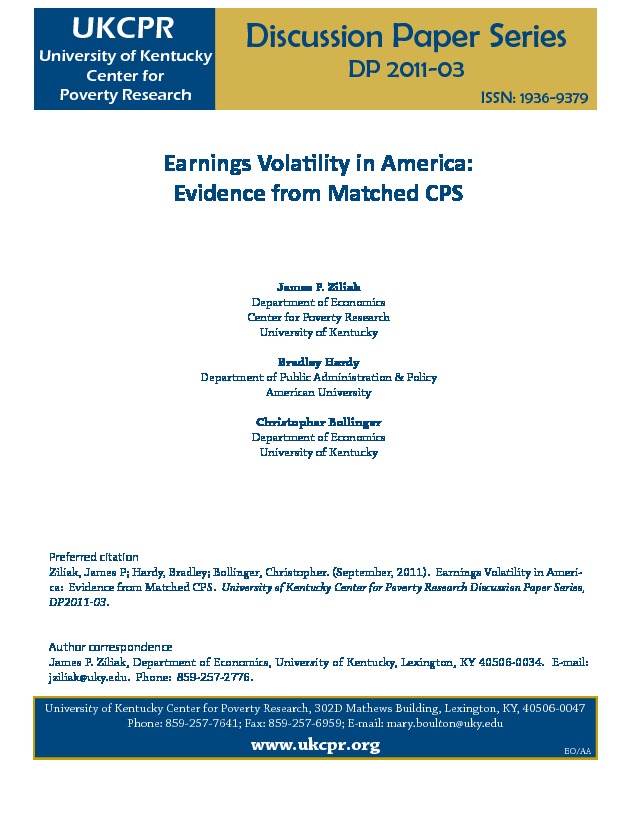We offer new evidence on earnings volatility of men and women in the United States over the past four decades by using matched data from the March Current Population Survey. We construct a measure of total volatility that encompasses both permanent and transitory instability, and that admits employment transitions and losses from self employment. We also present a detailed decomposition of earnings volatility to account for changing shares in employment probabilities, conditional variances of continuous workers, and conditional mean variances from labor-force entry and exit. Our results show that earnings volatility among men increased by 15 percent from the early 1970s to mid 1980s, while women’s volatility fell, and each stabilized thereafter. However, this pooled series masks important heterogeneity in volatility levels and trends across education groups and marital status. We find that men’s earnings volatility is increasingly accounted for by employment transitions, especially exits, while the share of women’s volatility accounted for by continuous workers rose, each of which highlights the importance of allowing for periods of non-work in volatility studies.
Research
InequalityPDF Thumbnail
